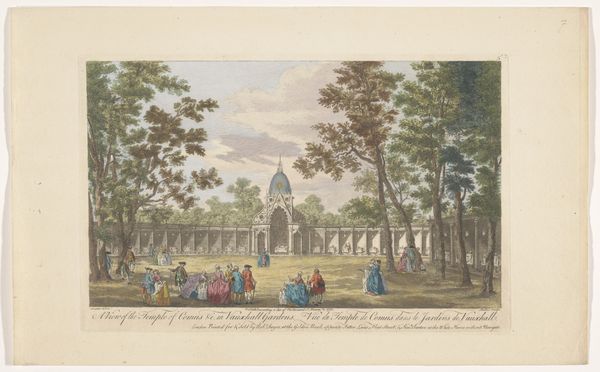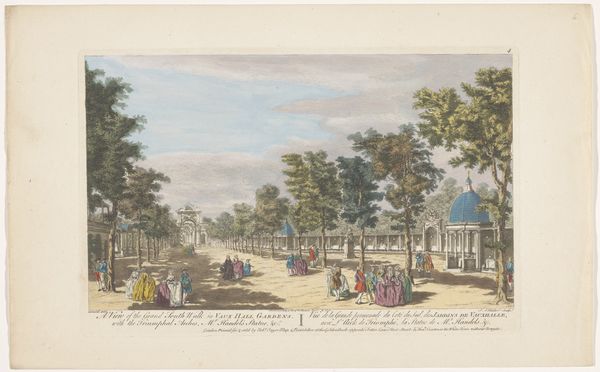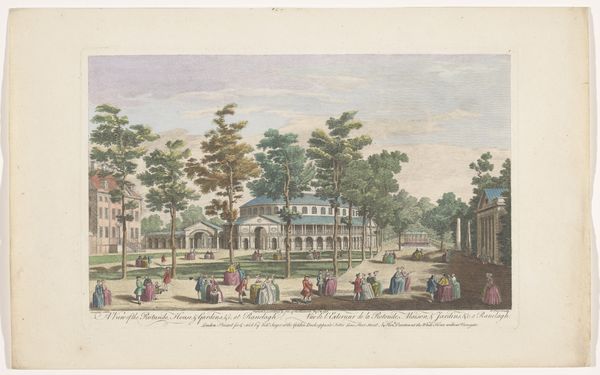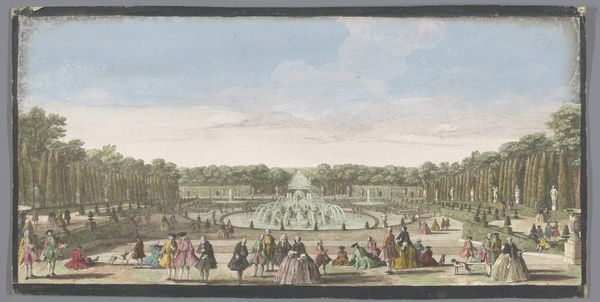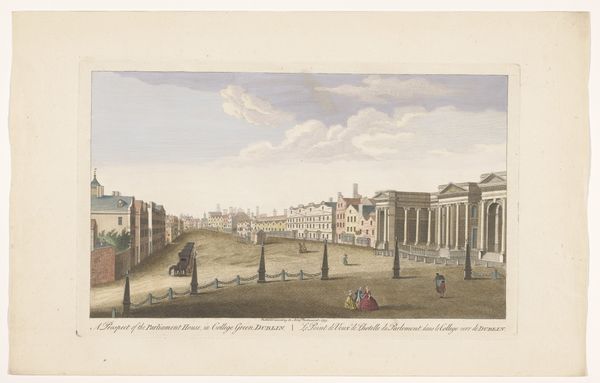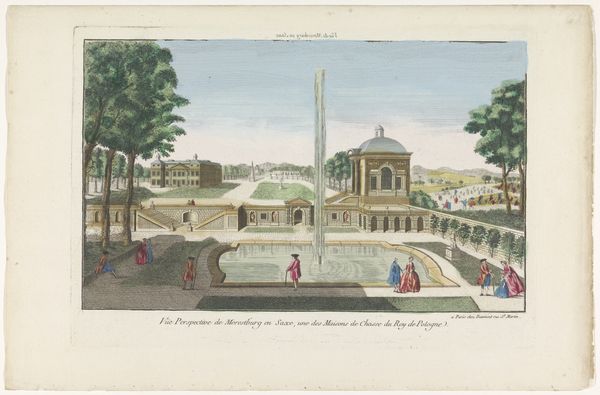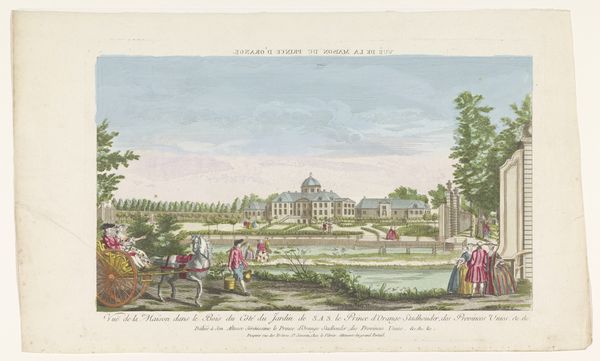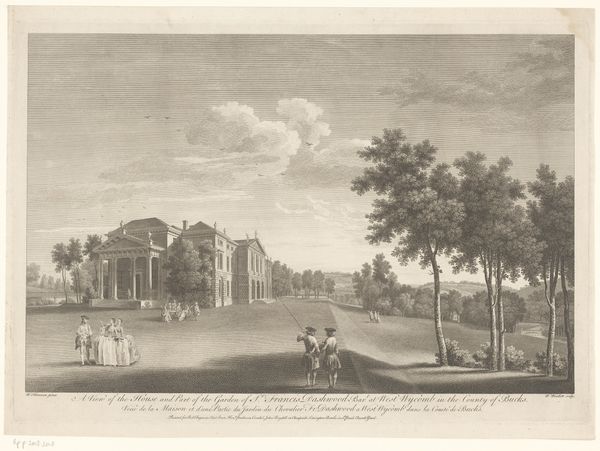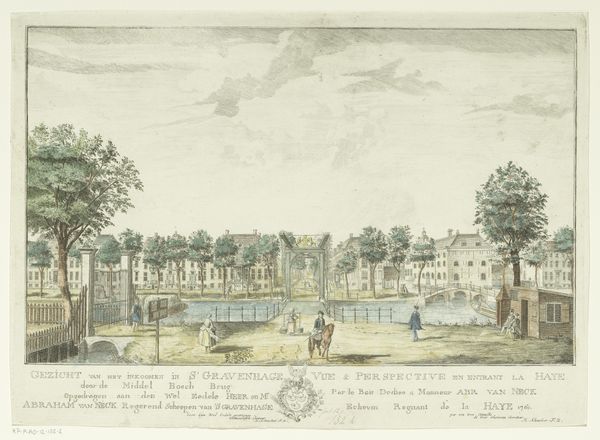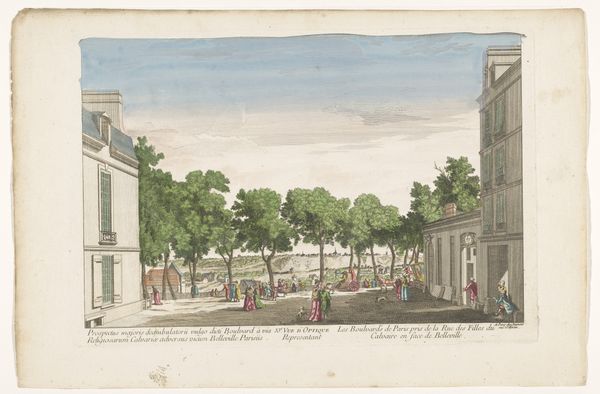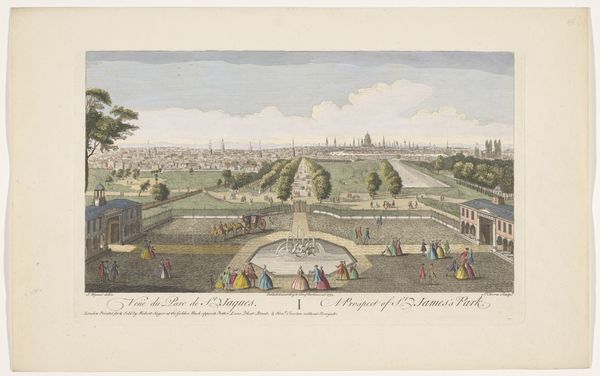
painting, watercolor
#
painting
#
landscape
#
watercolor
#
cityscape
#
genre-painting
#
watercolor
Dimensions: height 400 mm, width 693 mm
Copyright: Rijks Museum: Open Domain
Curator: B. van Lier created this watercolor, titled "De Uytvlught Country House, Colombo," around 1750. It's a fascinating cityscape. What are your initial thoughts? Editor: Serenity, definitely serenity. It’s like looking at a carefully staged theatre set. Everything is very orderly; the people, the architecture, even the foliage. There’s a real sense of quiet composure. Curator: Indeed. Considering the social climate of Colombo at the time, it is difficult to ignore the image's politics. The figures in the foreground could suggest an attempt by the ruling colonists to display harmony within their societal structures during that era. This curated tranquility often overshadowed underlying tensions. Editor: I agree, there's certainly a gloss being applied. The symbols, for me, are those of structured leisure – the figures strolling, perhaps engaging in some sort of game or leisurely pursuit. These scenes of colonial life often serve as representations of their social hierarchy, carefully maintained within their structured environment. What stories might lie beneath this ordered facade? Curator: Precisely. The Uytvlught Country House itself becomes a symbolic representation of Dutch colonial power and control, set against the local landscape. Editor: Notice how the light almost caresses the buildings. It’s a delicate balance between the symbols of power—the architecture, the neatly ordered gardens—and a certain vulnerable beauty in the execution of the watercolour itself. Is the artist hinting at something perhaps lost in translation between cultures? Curator: A very astute point! It certainly brings forth discussions about the projection and negotiation of colonial authority through imagery and art practices in that particular region and historical context. Thank you for your nuanced reading. Editor: Thank you; this was an exercise in looking past surfaces! To truly appreciate the past, one must seek the hidden stories in even the simplest imagery.
Comments
No comments
Be the first to comment and join the conversation on the ultimate creative platform.
